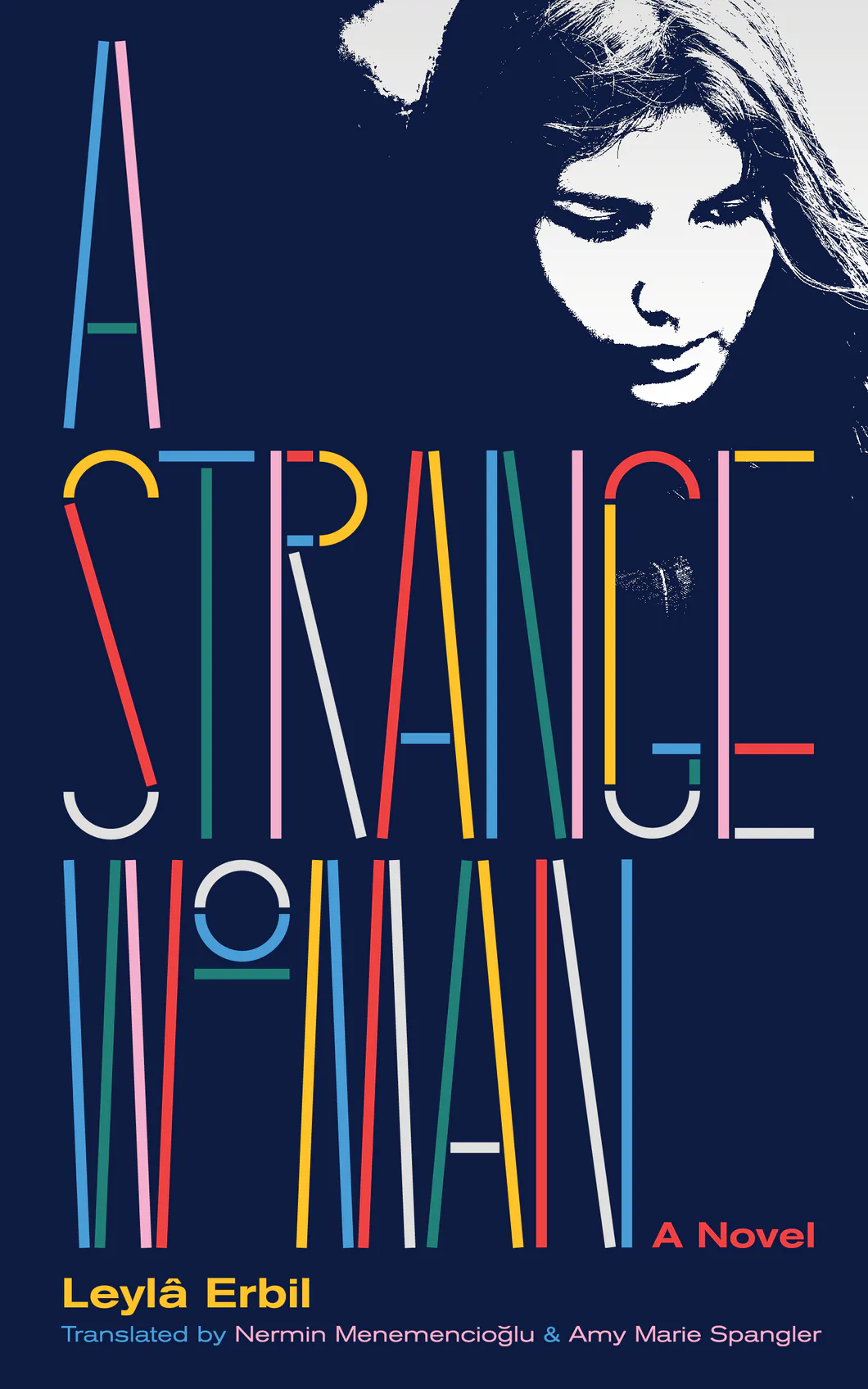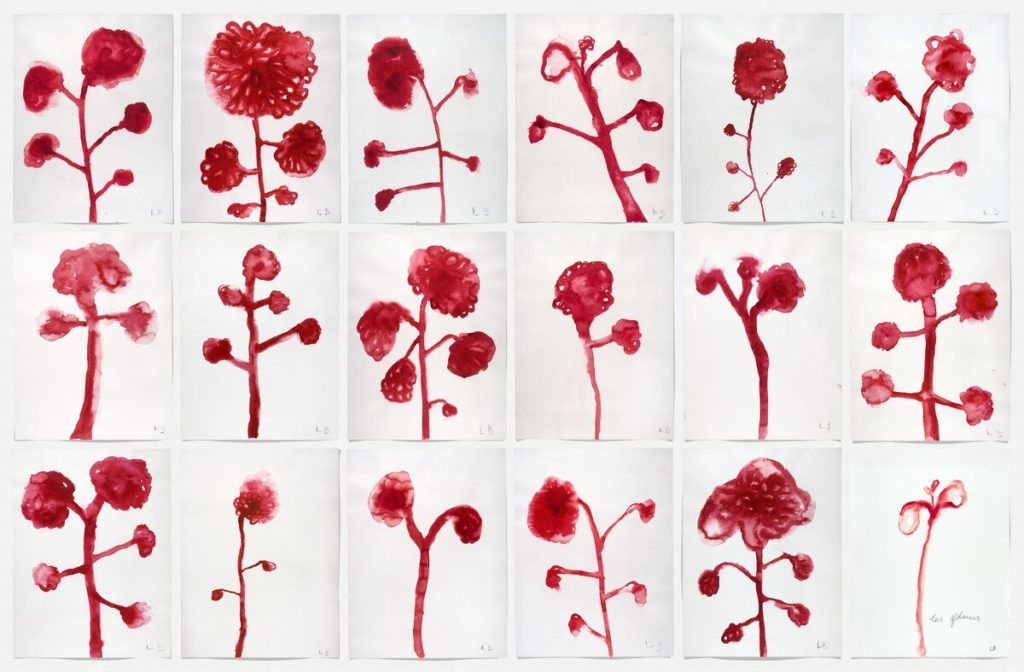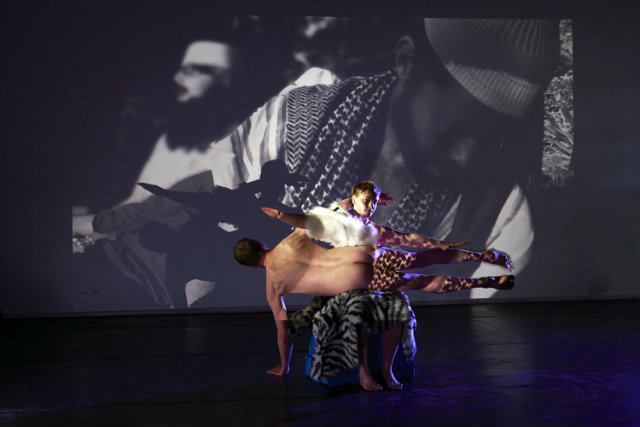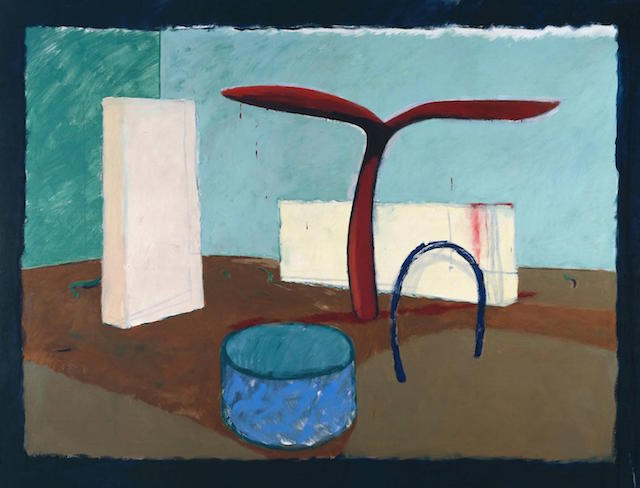All happy translators are alike, but every unhappy translator is unhappy in their own way. Beyond the countless technical, ethical, and philosophical challenges behind the act of translating a text itself, there is the translator’s relationship with their author. This relationship can be intimate and intense, a thrilling if fraught artistic collaboration. An author may balk at any suggested changes, offer too many of their own, or insist that the translator communicate what was meant rather than what is actually written. Or, worse still, the author can say nothing at all. Many translators work with the fervor of a spurned child, working selflessly and by themselves for years on end without ever hearing a word of feedback or encouragement from the author. If the translation is one day published (the translator having also bore, no doubt, the silence of editors), they will continue to wait, now acting as publicist and evangelist, hoping that maybe it is global recognition that will finally merit some gratitude from the author themselves. But this can be hard to come by as words of love from an emotionless father. Many are spared the heartache by translating the works of authors who have already died.
And then there is the curious case of Amy Marie Spangler, translator of A Strange Woman by Leylâ Erbil. When Spangler set out to translate this complex and inventive first novel by one of Turkey’s most prestigious authors—itself a complex family drama that deals in many ways miscommunication—she had to account for not one absent author but two. As she explains in her translator’s preface, Spangler did not start translating Tuhaf Bir Kadın from scratch, but originally sought to shepherd a pre-existing translation by the deceased Turkish poet Nermin Menemencioğlu to publication. Menemencioğlu had completed the translation all the way back in the early 1970s, shortly after Erbil first published the novel in Turkish. The only problem was that while Menemencioğlu had finished her translation, Erbil wasn’t done writing the book.

Leylâ Erbil, A Strange Woman, trans. by Nermin Menemencioğlu and Amy Marie Spangler (Deep Vellum, 2022).
***
Tuhaf Bir Kadın is a fractured story made up of journal entries, newspaper clippings, streams of consciousness, and dream logic. It follows a woman named Nermin and her relationship to the people in her world: her friends, her mother, her extended family, her father, her husband, and her class. Over four sections composed from various narrative styles and perspectives she tries to understand others and to explain herself: One section features a young Nermin trying to find her poetic voice among male-dominated intellectual circles, another shows her struggle to move to a working-class neighborhood and spread the message of socialism among her indignant neighbors. A large part of the middle of the novel, made up by two sections entitled “Mother” and “Father,” are a kaleidoscopic Oedipal drama. While “Mother” takes the form of a surreal dream sequence, “The Father” feels like a case file for a murder got mixed up with a deathbed confession. The section alternates between the details behind the real-life unsolved murder of the Turkish communist Mustafa Suphi, and the father’s own impending death. As the father lies on his deathbed, his memories mix with random facts from the case, along with bits of oral and written cultural objects, creating a type of linguistic collage that allegorizes the interchange between personal memory and national history; a genre at which Erbil would excel at in later novels with the epistolary narrative irony of Mektup Aşkları, the themes of political trauma and forgetting in Karanlığın Günü, and the intricate historical allusions of Kalan.
But because the Suphi incident was a real-life case, Erbil continued to insert new evidence from the case into the novel whenever there was a new printing. Over the course of the 40 years before Erbil herself passed away in 2013, the novel would eventually come to differ from the original translation. When Spangler took up the crusade of having the original translation published, she realized that there were several differences between the older translation and the updated original. As she explains in her Translator’s Preface, “unable to help myself, I began comparing Menemencioğlu’s translation to the Turkish line by line and found that the English had been stylistically “smoothed out” in many ways. Knowing what a stickler Erbil was when it came to style, and how deliberate she was in the choices she made, I wondered if the translation shouldn’t be further edited.”
Spangler has the reverence and precision of the most dedicated exegetist, but she seems to have been torn between two loyalties. On the one hand, Menemencioğlu’s translation text should carry scriptural authority as it was made with direct consultation of Leylâ Erbil herself. The two undertook an extended correspondence, and Spangler had direct access to read their exchange by visiting the new Leylâ Erbil archive at Boğaziçi University. Some of these letters discuss specific editorial choices related directly to A Strange Woman. But on the other hand, Spangler is a dedicated Erbilist, and the hermeneutic of “grammatical insurgency,” as Erbil’s style came to be known, has little regard for values like precedence, authority, or entrustment. Erbil would at times go so far as to disavow loyalty to her own style: “I’m not the one who decides my writing style, it’s the people, places, geography, history, archaeology etc. that dictate it to me.”* Spangler, then, seems to be on firm textual footing to make her own choices. In her Preface she lays out her justification for avoiding any stylistic choices that would betray the text’s difficulty, inventiveness, and strangeness.
Given the history of these changes, one cannot help themselves from comparing Menemencioğlu’s earlier translation to the one that has just been published. Beyond the mere curiosity of seeing how Spangler manages to satisfy contending claims, it would be a disservice to the memory of Erbil to not keep prodding. Looking closely through both versions, there are indeed numerous changes to the originally translated text. But most of them show the delicacy of a respectful proof-reader; a fussing with punctuation and a tweaking of syntax. Only occasionally does Spangler go so far as to translate an entire word differently. At first glance it seems that Spangler herself has merely “smoothed out” the text and updated it for a contemporary audience.
But one should not be misled by the seemingly innocuous addition of a comma or parentheses into thinking these changes are minor. Erbil was famously fastidious about punctuation (she is credited, after all, with inventing her own punctuation system including comma-exclamation points and triple commas, as the pre-existing symbols didn’t capture the nuance of pace and phrasing to her satisfaction). The small changes in fact add up and reveal deeply meaningful things to the English-language reader about the people, places, geography, and history of the novel. To take just one example, in “The Father” section of the novel, Nermin comes to visit her father in the hospital.
Erbil, 9th edition Turkish text:
Karım hıçkırmaya başladı, dışarı çıkardılar onu. Nermin çıkmadı. Kötülükle karşılaştığında katılaşır, kanı donar, “ıslanan tilki yağmurdan korkmaz” derler, öyle bu kız. Geldi oturdu yatağımın ucuna ayaklarımdan başladı, bacaklarıma, kemençeme, kemençemin sapına, çeneme, dudaklarıma, burnuma, gözlerime, kaşlarıma, alnıma, saçlarıma, kulaklarıma uzun uzun baktı, yorganın dışına düşmüş elime uzandı nabzımı saydı, “Ağrın var mı?” dedi. “Yok, şimdi iyiyim. (87)
Menemencioğlu’s translation manuscript:
My wife is sobbing now, so they quietly get her out of the room. Nermin doesn’t go with her. When things go badly, that girl grows hard, her blood seems to freeze, a wet fox doesn’t feel the rain, they say, that’s how she acts. She sat down at the foot of my bed, her look sweeping up from my feet, past my legs, my fiddle, the handle of my fiddle, my chin, lips, nose, eyes, forehead, ears. My hand was hanging out from under the quilt, she took it and felt my pulse. “Do you have any pain?” she asked. “No, I’m fine now.”
Spangler’s Edit/Translation:
My wife began sobbing at this point, so they led her out of the room. Nermin didn’t go with her, though. When things get tough, that girl goes hard, her blood freezes, there’s that saying, “a wet fox doesn’t feel the rain”— that’s exactly how she is. She sat down at the foot of my bed and began looking at me, slowly moving her gaze, beginning with my feet, past my legs, up my kemençe, my kemençe stem, my chin, lips, nose, eyes, eyebrows, forehead, hair, ears, she reached out and took my hand, which was hanging out from under the quilt, and felt my pulse. “Do you have any pain?” she asked. “No, I’m fine now.” (115)
In describing Nermin’s stoicism, the father in Spangler’s translation uses more pointed expressions. In English ‘to go hard’ is harsher and more sudden than ‘to grow hard’, and the word “seems” is deleted to make the freezing of her blood a full metaphor. The entire sentence echoes the idiom “when the going gets tough, the tough get going,” which suggests that Nermin approaches even the most vulnerable moments of familial intimacy with an attitude of self-reliant hardheadedness. From everything we’ve learned about Nermin so far in the novel, and based on what will be revealed between her and her father in the conversation that follows, this impression is not only true, but a key to understanding how her efforts at political proselytizing will be sabotaged towards the end of the novel.
Her father also describes her by using the proverb “a wet fox doesn’t feel the rain,” but in the newer translation it is bracketed off from the indirect discourse by the use of parentheses. Menemencioğlu’s version could be read as if the proverb is well known, the “they” being used to signal the passive voice rather than a specific deictic. But in keeping the parentheses from the original, Spangler holds on to the separation of voices, insisting that there is a specific “they” in mind who say this particular proverb. “The Father” section of the novel is filled with allusions to the specific climate and culture of the Black Sea region of northern Turkey. Compared to the rest of the country, this region is rainier and more forested. The proverb, then, seems to be a regionalism unique to the Black Sea, some linguistic remnant of the father’s childhood perhaps. This is very much in line with all of the dense and particular cultural references that make up the stream of consciousness in this section. The parentheses do much more to suggest the specificity of the proverb then, to make it more tangibly a linguistic remnant from the Father’s childhood, an expression coming to him now as something about his grown daughter reminds him of the stoicism and resolve of the villagers he knew in his youth. We get something so much more specific about the father’s origin, a precise memory belonging to a past that is being forgotten.
And lastly there is the issue of the kemençe. Lying exposed on the hospital bed, Nermin’s father feels vulnerability and embarrassment which is only compounded by the fact that his own daughter sees him in this state. She sees everything, even his most private parts. There is nothing to shield him from her unempathetic gaze, nothing except euphemism. In Menemencioğlu’s version he describes her looking at his fiddle, which seems like a strange and unobvious slang word for penis. A quick reading might not take it to mean penis at all. This is because a kemençe, the word in the original text, and an American-style fiddle, are not at all the same instrument. Looking up kemençe in a Google image search will quickly reveal that it has a much narrower and much more phallic shape. Its head looks practically explicit once the inference has been made. Besides being more overtly sexualized, the kemençe is also more regionally specific, again being an instrument associated with the Black Sea region. Not only that, it is an instrument associated with the Horon dance, acknowledged by the Father himself as an expression of resistance and virility.** Like most idealistic translators, Spangler has a distaste for the coddling use of footnotes, and italicizes kemençe without ever explaining what it is. She knows that English-language readers all have access to the internet, and the only thing worse than having to include a footnote is having to use it to explain a sexual euphemism. But the real point is kemençe does so much work in the text, suggesting all at once the father’s connection to regional culture, his physical vulnerability and awkwardness, and the strange phenomenon of being medically examined by one’s own daughter, an experience that so flips the parent-child dynamic that it is the father who now is made to describe his own genitals like a child.
***
Because it inevitably requires so much interpersonal interpretation, there is something of the analyst’s job in translation. A careful translator looks for the smallest tic, the smallest phrase for symptoms. The small changes in the examples above are what many would consider as falling into the realm of proof-reading rather than editing. Nevertheless, each one tells us something different about the uniqueness and complexity of the novel’s characters, and shows us the complicated and dysfunctional relationship between them. Any good Erbilist knows that even the slightest changes in punctuation can have immediate and enormous consequences for the text, especially when the text deals primarily with psychic life in both form and content.
I firmly hold the view that since all people are all debilitated and wounded (in a society—in a world—where everyone is debilitated, to be debilitated is to be “normal”), it may not be enough to describe them in familiar sentences or to make them speak in the first-person singular. Similarly, a text that alters and plays with the structure and meaning of the sentence requires that we change the traditional use of punctuation.***
Changes in form and structure not only capture the fraught relationships between the novel’s characters, but they also reflect on the relationship between author and translator. And this relationship, like that between analyst and analysand, is just as susceptible to transference. As Janet Malcolm describes the phenomenon, describing it “the idea that the most precious and inviolate of entities—personal relations—is actually a messy jangle of misapprehensions, at best an easy truce between powerful solitary fantasy systems,” transference sounds not a little like translation. Whether conducted through intimate correspondence, or intuited through literary seance, both of the translators of A Strange Woman still had to deal with the inherent limits of using language to understand and explain their author.
And the non-diegetic relationships of the novel go far beyond that: relationships between first and second translator, translator and editor, editor and reader. As much assistance as English-language readers generally need today to read translated novels from other countries, one should have nothing but sympathy for someone who tried to market a Turkish novel translation back in the 1970s. Indeed, despite the brilliance of the novel, it seems no amount of “smoothing out” was enough for English publishers back then. It is to Spangler, and the rest of our good fortune that it was Deep Vellum who finally decided to publish A Strange Woman. Their commitment to not only translating world literature, but difficult world literature, makes them the perfect host for Leylâ Erbil’s long-awaited arrival into English. Understanding this context helps us to acknowledge that the two texts differ slightly not due to differences in skill or personal taste, but because they carry the symptoms of countless relationships of dysfunction. It is no wonder, then, that every translator has to find their own way to translate those points when language fails and stumbles.
* Erbil, L. (2006). Leylâ Erbil’le Kitaplarını Konuştuk. Söyleşiyi yapan: A. Şebnem Birkan. Erişim: 19 Ekim 2015, http://yeniedebiyat.blogcu.com/leyla-erbil-le-kitaplarini-konustuk-a-sebnem-birkan/441601
** Thanks to Ekin Kurtdarcan for bringing this point to my attention.
*** “İnsanlara bakış açım, onların tümünün sakatlanmış, yaralanmış oldukları noktasında ısrarlı olunca, (herkesin sakatlanmış olduğu bir toplumda -dünyada- sakat olmak “normallik” anlamına gelir.) onları bilinen cümlelerle anlatmak ya da birinci tekille konuşturmak yeterli olmayabiliyor. Bunun gibi cümlenin yapısını, anlamını oynatan, başkalaştıran bir söylem klasik işaretleri de değiştirmeye zorluyor” (Düşler Öyküler dergisi, Sayı: 4, Mayıs 1997).
Cover image: Louise Bourgeois, Les Fleurs (2009).





